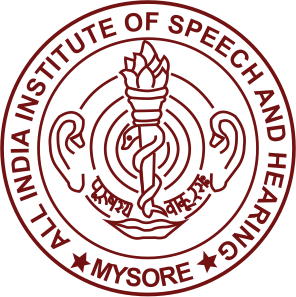| DC Field | Value | Language |
|---|
| dc.contributor.author | Devaraju, Dhatri S | - |
| dc.contributor.author | Vrinda, R | - |
| dc.contributor.author | Shanbal, Jayashree C | - |
| dc.contributor.author | Mamatha, N. M | - |
| dc.contributor.author | Gopi Sankar, R | - |
| dc.date.accessioned | 2020-10-15T11:02:04Z | - |
| dc.date.available | 2020-10-15T11:02:04Z | - |
| dc.date.issued | 2012 | - |
| dc.identifier.issn | 0973-662X | - |
| dc.identifier.uri | http://203.129.241.91:8080//handle/123456789/1855 | - |
| dc.description.abstract | The primary aim of the present study was to compare the behavioral with event-related potential (ERP) correlates of implicit phonological processing during the recognition of spoken words in typically developing children. Children in the age range of 8-10 years were investigated with both behavioral and lectrophysiological measures. The behavioral response and N400 were recorded using 30 pairs of words and non-words presented auditorily. The reaction time and accuracy for words and non-words were considered along with the peak amplitude and latency of N400 peak for the analysis. The results showed a significant difference in both reaction time and accuracy for words and non-words. There was also significant difference noted in the peak amplitude and latency measure for words and non-words. When the behavioral measures were correlated with amplitude and latency of N400, the reaction time correlated very well with amplitude and latency than the accuracy measure. Thus, indicating that the peak amplitude and latency measure of N400 could serve as an important tool which reflects the integration of semantic information in children at a lexical processing level. The present study also revealed a significant difference in the performance of the children on tasks which were observed to be lateralized to channels in the left hemisphere. This indicated that for lexical decision, involves a higher level language (semantic) processing in children lateralized to the left hemisphere. The present findings explain that the behavioral and neurophysiological measures are equally important and may not provide a complete picture when each of the measure is carried out alone | en_US |
| dc.language.iso | en | en_US |
| dc.subject | Lexical decision | en_US |
| dc.subject | Reaction time | en_US |
| dc.subject | Accuracy | en_US |
| dc.subject | Event-related potential (ERP) | en_US |
| dc.subject | N400 | en_US |
| dc.title | Lexical Processing in 8-10 Year Old Children: Evidence Through Behavioral And Erp Measure | en_US |
| dc.type | Article | en_US |
| dc.journalname.journalname | Journal of All India Institute of Speech and Hearing | en_US |
| dc.volumeno.volumeno | 31 | en_US |
| dc.pages.pages | 130-138 | en_US |
| Appears in Resource: | Journal Articles
|

